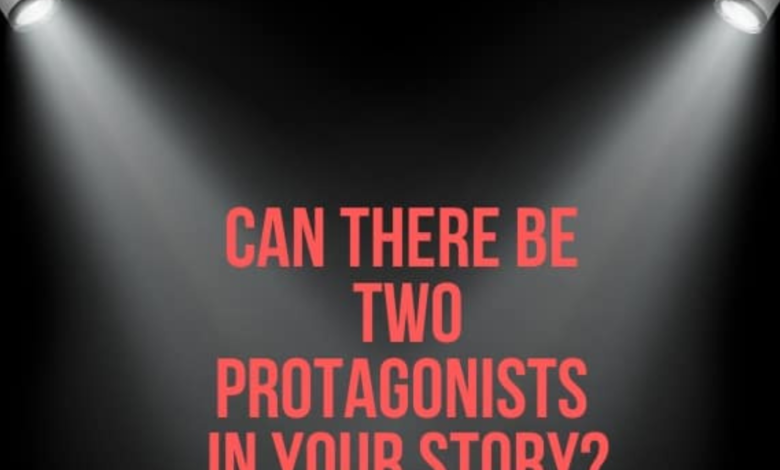Your Topics | Multiple Stories: Crafting Unique Narratives from a Single Idea

When it comes to storytelling, one of the most valuable skills a writer can possess is the ability to take a single topic and transform it into multiple stories. Whether you’re crafting short stories, essays, or novels, this skill allows for endless creativity and versatility. The concept of “Your Topics | Multiple Stories” is not just about exploring different ways to tell a tale—it’s about tapping into the deeper layers of a single idea and exploring various angles and perspectives.
In this article, we’ll delve into how to craft unique narratives from a single idea, how to approach writing multiple stories based on one topic, and how this technique can elevate your writing process. We’ll cover everything from brainstorming and idea generation to structuring your stories and executing them for different audiences.
What Does “Your Topics | Multiple Stories” Mean?
At its core, “Your Topics | Multiple Stories” refers to the ability to take one central idea or theme and craft multiple distinct narratives from it. This technique allows writers to explore different facets of the idea, providing depth and variation while still staying connected to the original topic. For example, a single topic like “family dynamics” can be explored through multiple lenses—perhaps one story might focus on a teenage rebellion, another on the struggles of a single parent, and yet another on the generational differences between grandparents and grandchildren.
The beauty of “Your Topics | Multiple Stories” lies in its flexibility. It gives writers the ability to diversify their content and offer multiple perspectives on the same theme, thus reaching different audiences and evoking different emotions. Each story may present the same basic concept but approach it from unique angles, thereby making the idea feel fresh and multifaceted.
Why Should You Craft Multiple Stories from a Single Topic?
There are several compelling reasons why writers should master the art of creating multiple stories from a single idea. Let’s explore a few:
- Increased Creativity
- The challenge of finding multiple ways to approach a single idea stretches your creative muscles. It forces you to think beyond the initial idea and consider new perspectives, settings, and character motivations. This process can lead to innovative and unexpected outcomes in your writing.
- Variety and Depth
- By exploring a topic from different angles, you gain a deeper understanding of the concept. Each story you write adds layers to your original topic, helping to flesh out the nuances and complexities of the theme. This can give your writing more depth and make your overall narrative world feel richer and more developed.
- Broader Audience Appeal
- Not everyone will resonate with the same aspect of a topic. By crafting multiple stories around the same idea, you’re more likely to appeal to a wider audience. For example, some readers may connect with a romance, while others may be drawn to a thriller—both stories might stem from the same central theme, but the genres and emotions vary.
- Cross-promotion and Content Versatility
- Writers, especially in today’s digital landscape, can repurpose stories for different platforms. By building a portfolio of stories around a single topic, you can experiment with formats and delivery styles, ranging from blog posts to social media content, or even serialized storytelling across multiple platforms.
- Increased Productivity
- When you focus on a single topic for several stories, you can develop a more efficient writing process. Once you’ve developed your core characters, settings, and concepts, writing multiple stories becomes less daunting, and you can build on the groundwork you’ve already laid. This can increase your overall writing productivity and speed.
How to Craft Multiple Stories from One Topic
Now that we understand the benefits of creating multiple stories from a single topic, let’s dive into the practical steps for achieving this. Below are some key tips and strategies for turning one idea into a range of unique narratives.
1. Brainstorm Different Angles
The first step to writing multiple stories is to think about the different angles you can approach your central topic. Consider how various themes, subplots, and perspectives can unfold within your core idea.
For example, if your topic is “overcoming fear,” you could explore different angles:
- A child’s fear of the dark
- A professional overcoming stage fright
- A person learning to confront their anxiety in everyday situations
By brainstorming various angles like these, you’ll be able to create stories that all connect to the central idea, but each with its distinctive focus.
2. Vary Your Story’s Genre and Tone
One way to craft unique narratives from a single topic is by playing with different genres and tones. A topic like “loss” can be explored in various genres, such as:
- A romantic tragedy about a couple coping with grief
- A mystery thriller about a detective investigating a disappearance
- A fantasy adventure where the protagonist faces the death of a mentor
Switching up the genre allows you to approach your topic in ways that keep it fresh and appealing to different audiences. You could even experiment with tone—writing a serious, dramatic piece alongside a more lighthearted or humorous take on the same theme.
3. Create Diverse Characters and Perspectives
Another way to approach “Your Topics | Multiple Stories” is by creating different characters who experience the topic in unique ways. For instance, if your topic is “friendship,” you could write:
- A story about a child’s first best friend
- A teenage rivalry between two friends
- A reunion story about two childhood friends reconnecting in adulthood
Each of these stories explores the same topic—friendship—but from different ages, experiences, and backgrounds, allowing you to create fresh narratives with each.
4. Use Different Narrative Styles or Points of View
To further distinguish your stories, experiment with different narrative styles or points of view. A topic like “self-discovery” could be explored through:
- A first-person diary entry that delves into the protagonist’s thoughts
- A third-person omniscient narrator revealing multiple characters’ journeys of self-discovery
- A second-person perspective where the reader is directly involved in the character’s growth
Changing the narrative style or point of view offers a fresh twist on your central topic, making each story feel distinct even though they share the same core theme.
5. Incorporate Different Settings and Periods
The setting and period of your story can dramatically affect its tone and direction. Even if you’re exploring the same topic, placing the story in different settings or eras will yield unique results. For instance:
- It is a contemporary story about finding purpose
- A historical fiction piece set in the 1800s about a person overcoming societal expectations
- A dystopian future narrative about self-empowerment in a post-apocalyptic world
Varying the setting or period will provide each story with a distinctive backdrop, making it feel like a fresh take on the same topic.
Examples of “Your Topics | Multiple Stories”
Here are a few examples to illustrate how a single topic can be transformed into multiple stories:
Topic: “Betrayal”
- A family drama about a sibling who betrays their sister to inherit the family business
- A romantic suspense where a lover’s betrayal leads to a life-or-death confrontation
- A historical fiction set in the 1940s where political betrayal shapes the course of a nation
Topic: “Courage”
- A coming-of-age story about a young athlete overcoming self-doubt to achieve greatness
- A psychological thriller where a detective must face his fears in a high-stakes investigation
- A historical narrative about a soldier exhibiting courage in the face of war
Conclusion
Mastering the art of crafting multiple stories from a single idea opens up countless creative possibilities. By exploring different angles, genres, and characters, you can transform one topic into a series of unique narratives that captivate a diverse audience. Whether you’re looking to deepen your writing skills, explore complex themes, or build a portfolio of stories, “Your Topics | Multiple Stories” offers a powerful method for developing rich, engaging content.
By focusing on variety, creativity, and perspective, you can expand your storytelling horizons and create a body of work that is rich, diverse, and full of potential.
Frequently Asked Questions (FAQs)
1. How do I choose which angle to explore when writing multiple stories?
Start by brainstorming the central idea from various angles—think about different characters, settings, or themes that might align with your topic. Choose the angle that excites you the most or offers the richest potential for exploration.
2. Can I write multiple stories on the same topic for different genres?
Absolutely! Experimenting with multiple genres is one of the best ways to explore your topic from different perspectives. A single idea can work in various genres, from romance to thriller to fantasy.
3. How do I make sure each story feels unique?
Focus on varying your characters, narrative style, tone, and setting. These elements will help distinguish each story, even if they share the same core idea.
4. Is it possible to write multiple stories based on one your topics | multiple stories for a single book or series?
Yes! Many authors write a series of connected short stories or chapters that explore different facets of the same topic. This can create a cohesive yet multifaceted reading experience.
5. How do I keep my audience engaged when exploring multiple stories on the same topic?
Focus on your characters’ emotional journeys and ensure each story offers a fresh perspective. By keeping each narrative distinct and compelling, you can keep your audience interested in exploring all your stories, even if they are based on the same your topics | multiple stories.
You May Also Read: https://usasmartnews.com/





pvauvl